- Administrator
- Albums and Singles
 Eleventh Dream Day has got to be one of the most well-adjusted bands ever, loosely holding together for over two decades despite never quite achieving the level of success they deserved and sharing members with Freakwater and Tortoise.  More remarkable still is how well they've continued to evolve and remain vital after all this time, as 2006's Zeroes and Ones ranked among their best efforts. Riot Now! picks up right where that album left off and continues EDD's late career momentum beautifully, sounding very much like a great rock band at the top of their game.
Eleventh Dream Day has got to be one of the most well-adjusted bands ever, loosely holding together for over two decades despite never quite achieving the level of success they deserved and sharing members with Freakwater and Tortoise.  More remarkable still is how well they've continued to evolve and remain vital after all this time, as 2006's Zeroes and Ones ranked among their best efforts. Riot Now! picks up right where that album left off and continues EDD's late career momentum beautifully, sounding very much like a great rock band at the top of their game.
For some reason, it took a very long time for Eleventh Dream Day to register on my radar and I always mistakenly thought they were a shoegazer band.  They most definitely aren't and I was definitely missing out.  Though Riot Now! is not quite as raucous as its title suggests, Rick Rizzo and the gang deliver a very solid album of muscular, no-frills, straightforward rock that not many people seem to know how to make anymore.  These songs all have a very "classic" feel to them, sounding like they could have been recorded at any time over the last 20 years.  A lot of that has to do with Rizzo's passion for Crazy Horse, but Eleventh Dream Day doesn’t sound retro or imitative.  Instead, they just sound immune to trends, despite being clearly informed by both punk and indie rock.
This is an album that is stronger than the sum of its parts, as I am fairly unmoved by the actual lyrical content of the songs: Rizzo tends to write about everyday life's existential struggles and frustrations with a great deal of metaphor and symbolism (trees, driving, satellites, tall men, etc.) that didn't quite connect with me.  It is probably possible to read a lot more into his songs than I did though.  Conversely, it is also possible to enjoy the album on a completely different level by taking all of his words quite literally ("man, this guy sure hates trees!").  Still, the lyrics are intelligent and Rick doesn't try to fake 20-something self-absorption and angst, which I very much appreciate.  The secret to this album's success lies more in its details.
For example, Rizzo is a pretty great guitarist (coming from someone who doesn't particularly like guitars).  He doesn't open up very often, but when he does, his solos add quite a bit to the songs (particularly the anthemic outro of "Tall Man").  They're generally pretty simple, but it seems like he means every single damn note.  Also, there is a deliberate messiness and snarl to them that would make Ira Kaplan or J. Mascis proud.  Another great thing about this album is just simple mechanics: these guys have an impressive mastery of dynamics, space, and structure.  If there is a cool bass line, like in "Maybe This Time," then it is given the necessary room to stand out. This band simply knows exactly how to construct a good, memorable song.
My favorite part of Riot Now!, however, is the fact that drummer Janet Beveridge Bean contributes energetic backing vocals to nearly every song.  It's not that her and Rizzo lock into heartbreaking harmonies or anything.  Instead, it's the fact that even the drummer is excitedly singing and shouting along with the whole damn album: it feels like the whole band is wholeheartedly into every single one these songs.  The whole album was recorded in mostly single takes too, which adds still further to the sense of vibrancy and immediacy.  That aesthetic suits the band very well.
The band isn't afraid to take chances either, as the ballad-like "Away With Words" is quite a departure.  I'm a little bit conflicted by it, as some of Bean's early backing vocals are "atmospheric" and "ethereal" in a somewhat clumsy way (like when she just bursts in with a prolonged "la").  That might have been a poor mixing decision rather than a poor aesthetic one though. However, once the song starts to gather momentum, her vocals become pretty wonderful and essential: she begins by providing a vulnerable-sounding echo to Rizzo's voice, then builds to a ghostly trill beneath the very soulful guitar solo crescendo.  It ultimately ends up turning into quite a good song.  Notably, it is completely uncharacteristic for me to love a song mostly for the backing vocals and the guitar solo, but that is the case here.  This is a historic moment.
The standout song here is probably the jangly "Divining For Water," but this is the kind of album where nearly every song could be a released as a single.  I know a lot of people swear that Prairie School Freakout or Lived to Tell are the albums to get, but Riot Now! makes a damn strong case that Eleventh Dream Day is in the midst of a second (and possibly better) golden age.
Lived to Tell will be pretty hard to top though...
 
 
 
Read More
- Administrator
- Albums and Singles
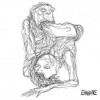 I try to avoid using the word "challenging" in regards to music—it is typically either a dumb exaggeration, or simply untrue. In this case, however, "challenging" is not only entirely appropriate, but perhaps an understatement. Ehnahre play dissonant, cerebral music that is rooted in death metal, but also throws the rulebook out the window; their latest album is all the more appealing for its inaccessibility.
I try to avoid using the word "challenging" in regards to music—it is typically either a dumb exaggeration, or simply untrue. In this case, however, "challenging" is not only entirely appropriate, but perhaps an understatement. Ehnahre play dissonant, cerebral music that is rooted in death metal, but also throws the rulebook out the window; their latest album is all the more appealing for its inaccessibility.
Admittedly, I don't find myself at all engaged by traditional death metal, which is perhaps why I find this album so refreshing. Taming the Cannibals is, at its heart, an avant-garde death metal album. It downplays the standard tropes of the genre—masturbatory guitar playing, tired blast beats, Cookie Monster vocals—and replaces them with a number of twists and unexpected developments.
The first song, aptly named "The Clatterbones," kicks off with a drum solo reminiscent of a free jazz percussionist playing maniacally on a skeleton. When the guitar riffs come in, they are not virtuosic statements of aptitude, but atonal, slow motion riffs reminiscent of Khanate's first recordings. Intense segments are surrounded by empty space and creepy ambience, courtesy of C. Spencer Yeh's screeching violin and Greg Kelley's trumpet. Any semblance of traditional, structured songwriting is cast aside in favor of improvisational drum playing (truly the album's anchor) and static, black-ambient meltdowns between songs. The vocals are not merely a tribute to Sesame Street's foremost cookie enthusiast; they sound genuinely anguished, tormented.
I have hardly any complaints about Taming the Cannibals: the only thing that strikes me as out of place is the brief, spoken-word segment that closes "Foehn (Lullaby)." Otherwise, Ehnahre sound like they are playing by their own rules throughout the album, charging headfirst through seemingly improvisational songs that draw from death, black and doom metal, yet end up sounding like only themselves. This is metal at its most deconstructed, unconventional and challenging—a big "fuck you" to conventional death metal and, perhaps, any type of traditional heavy music.
Samples:
Read More
- Administrator
- Albums and Singles
 On one of Nigel Ayers’ most recent musical efforts, his dissent against the nominal powers of church, state, and corporate enterprise are channeled into a chilled out, sinsemilla infused, studio session. These are protest songs without many words. This is a soundtrack for a revolution against reality itself. While Jah is not praised anywhere on the album, the spirit of liberation which is so much a part of ska, reggae, dub, and their children is apparent everywhere. It is obvious Nigel has studied the form. The tunes have been built from a solid blueprint of sub-bass beats and propulsive riddim. The reverberations, echoes, and background sound washes are subtle and complex. By washing off the grime he occupies a niche not emitted by diurnal producers.
On one of Nigel Ayers’ most recent musical efforts, his dissent against the nominal powers of church, state, and corporate enterprise are channeled into a chilled out, sinsemilla infused, studio session. These are protest songs without many words. This is a soundtrack for a revolution against reality itself. While Jah is not praised anywhere on the album, the spirit of liberation which is so much a part of ska, reggae, dub, and their children is apparent everywhere. It is obvious Nigel has studied the form. The tunes have been built from a solid blueprint of sub-bass beats and propulsive riddim. The reverberations, echoes, and background sound washes are subtle and complex. By washing off the grime he occupies a niche not emitted by diurnal producers.
Even though the resinous beats have been percolated through bong water they play at a slow, back and forth tempo standard to dub. The emphasis on the beat makes this work a sister or cousin to albums like Autonomia or Collateral Salvage. Undercurrents of friction and dirt swim just below the digital surface. The weird chirps and humorous samples are quirky and true to Nigel’s broad ranging style. These fuzzy textures, added to the usual stock, are what make this dubplate special unique.
The gentle tap of hi-hats starts things off on "Emissions in Control Dub," then a cogent bass line slinks in just before a steep upward synth glide. Stiff brass–or are those Tibetan thighbone trumpets—haunt the otherworldly background, gradually screeching into over-driven banshee wails. The real pleasure here for me is over the half-way point when I am teased for a brief moment by blustery break-beats. On "Every Day Is Sunday" there is a great background ambience coming from what could be old MIDI programs or just plain old Casio keyboards. It gives the song a sunny playroom atmosphere, of light passing in through a window and illuminating the floating bits of dust. The timbre of the tones reminds me of Robert Ashley’s work on Superior Seven.
On "Bodmin Parkway (Disintegrated Public Transport mix)" I am back in Nigel’s home territory, literally. The focal point in this scorching mix is a field recording of a woman's voice announcing arrivals, departures, rules and regulations through the loudspeakers at the Bodmin Parkway rail station. On "Levitation Dub" a nice and furious melodica or keyboard riff creates a quick air of buoyancy. In "Energy Crisis Dub" there is a twangy de-tuned guitar break which sits well with the soda fizz bubbles, bubble wrap pops and metallic bass phrasings. I am impressed not only by these rather quick moments that tend to happen in his songs, which give the whole an added flourish, but of the economy of beats. Nigel has been creating music from loops for a very long time (even creating three sample libraries for Sony Creative Software). He is a surgeon with the use of the loop.
There are two reprises in this collection of songs. The last track being the dub of "Escape from Religon." It is this version I am most enamored of. Not only does it escape from the often stultifying influences hovering around organized belief systems, it escapes the gravity well of Earth and moves into an extra-solar orbit, a fitting place to leave me in the end. I look forward to a second volume of In Dub.
samples:
 
Read More
- Administrator
- Albums and Singles
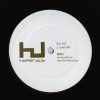 Since his 2006 debut full-length and 2007's Untrue, which stand as two of dubstep's crowning achievements, Burial has been relatively quiet, releasing a pair of collaborations with Four Tet and Radiohead's Thom Yorke in nondescript packaging. His new 12" on Hyperdub is a formal breaking of silence, then—his first solo work since Untrue.
Since his 2006 debut full-length and 2007's Untrue, which stand as two of dubstep's crowning achievements, Burial has been relatively quiet, releasing a pair of collaborations with Four Tet and Radiohead's Thom Yorke in nondescript packaging. His new 12" on Hyperdub is a formal breaking of silence, then—his first solo work since Untrue.
A-side and title track "Street Halo" sports deep, eerie swaths of bass, ambient crackling, a clicking two-step rhythm, and Burial's inimitable signature—a disembodied, soulful vocal floating in and out of the mix. It sounds tailor-made to soundtrack a walk through a dim alley lit by flickering streetlights, coated in a fresh layer of rain. While that is no surprise, the mood is offset by the track's quick, danceable shuffle—upbeat by Burial standards—that fondly brings to mind "Unite," his arresting, overlooked cut exclusive to the Soul Jazz compilation Box of Dub.
The first B-side, "NYC," would have sounded at home on Untrue. It follows the template carved out by immediately memorable songs like "Archangel" and "Raver," featuring a R&B-tinged female vocal loop pitched up like a chipmunk, pleading its cause in ghostly chipmunk echoes ("Didn't you know... this is love?") over a gentle, shuffling rhythm. It is by no means a departure from Burial's core aesthetic, and it sounds ridiculous on paper—but it is positively spellbinding.
The second B-side, "Stolen Dog," initially recalls the melody of Corey Hart's hit "Sunglasses at Night", then dives into less embarrassing territory along the lines of Burial's debut LP—a widescreen, ambient-dub soundscape with a pair of warped, unintelligible vocals. It seems cut short at six minutes, though, and I would have preferred it to sprawl out perhaps twice as long. More than the other two tracks, "Stolen Dog" sounds like Burial toying with his well-established sound, trying to figure out how he can push the boundaries of his work. (Hint: probably not by sounding like "Sunglasses at Night.")
As usual, Burial paints with an subtle, distinctive palette of sounds. I admire his strict quality control, and his music remains so strikingly unique that he need not deviate much from his blueprint laid down in the past. Here's hoping Street Halo is the prelude to a new, full-length LP later this year.
Samples:
Read More
- Administrator
- Albums and Singles
"Hearing that our 2009 Paris show was to be in small space called Le Klub, I admit being unable to stop a smile spreading across my face. During the soundcheck in another Paris club years earlier, a record label representative was experiencing problems over a guest list at the door. Filled with anger, he burst into the hall ranting and cursing in Parisian pidgeon English..... “THIS KLUB IS FUCKEEENG!” Those words instantly entered Dots-mythology – an utterance used to let off steam in the face of frustration on the road (and always with a French accent). Legendary Pink Dots played a two-night residency at Le Klub, and the utterance was never needed. The first night was an intimate affair, while the second, which drew a weekend crowd, felt like a rock show in a shoebox. It was this second night that was filmed by Johanna Barda and her camera team."
--Edward Ka-Spel.
Coinciding with the Legendary Pink Dots’ 2011 European tour (which includes a night in Paris) comes this live DVD. The performance took place on November 13, 2009, in an intimate Parisian nightclub, with a lineup featuring Edward Ka-Spel, Silverman, Martijn de Kleer and Niels van Hoon. Raymond Steeg worked the soundboard.
The first 200 copies come with a limited edition set of five postcards, and are available exclusively from Soleilmoon, Speakerfire and The Terminal Kaleidoscope.
http://soleilmoon.com/store/searchresults.lasso?ArtistName=DOTS&TitleName=PARIS
http://www.speakerfire.com/dvds/legendary-pink-dots-paris-in-the-fall-dvd/
http://www.terminalkaleidoscope.com/
Read More
- Administrator
- Albums and Singles
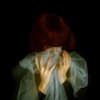 Over the last few years, Sheeran has been developing her craft as a solo performer. Occasional CD-R and download releases, along with regular live performance have shown her skills as a songwriter and a performer to be constantly increasing. Therefore it comes as no surprise to me that her debut album is absolute perfection. Every time I think that it has reached a peak, I am greeted with an equally good, if not better, song immediately afterwards.
Over the last few years, Sheeran has been developing her craft as a solo performer. Occasional CD-R and download releases, along with regular live performance have shown her skills as a songwriter and a performer to be constantly increasing. Therefore it comes as no surprise to me that her debut album is absolute perfection. Every time I think that it has reached a peak, I am greeted with an equally good, if not better, song immediately afterwards.
As Lust of Pig & The Fresh Blood has been plagued with production hiccups and is now appearing months later than expected, to finally hear this album after watching it slowly form on the stage and through Sheeran's Pledge Music campaign is a treat indeed. It is an expansive, layered and finely crafted work; each of the songs becoming its own fairy tale world. Sheeran utilises a range of instruments to create ever-changing backdrops for her songs. From ukulele to singing saw all the way through to glass-like electronics, she has made a collection of music that is continually exciting and each listen reveals another facet of her talents. On "Sally Please Don’t Go," Sheeran already uses enough musical ideas that would make an interesting album let alone a single song and she manages to keeps up this level of creativity for the length of Lust of Pig & The Fresh Blood.
"The Fresh Blood" forms a focal point in the album, Sheeran's vocals taking on their most lyrical and magical form yet: "Today I saw the world/Through a hole in the floor." The eerie implications of the words are matched by a haunting melody on an acoustic guitar that slowly gets enveloped by gurgling haze of electronics and drums. All the while, Sheeran seems to stand poised in the center of this seething music, her voice coming through clearly despite its gentleness. Elsewhere, "It's Been a Long Day" takes seemingly benign lyrics but casts them in a bewitching and slightly sinister light; Sheeran invites you to rest in her arms but her inflection suggests that you might never be released.
Some familiar names appear throughout Lust of Pig & The Fresh Blood, many of whom are related to Fovea Hex (of which Sheeran has been a staple part since their first EP). Clodagh Simonds lends her voice to "An Apple for You" and strings appear courtesy of Cora Venus Lunny and Kate Ellis, rounding out the music beautifully. However, at no point does Sheeran's music sound like just an offshoot of Fovea Hex. Evidently her own ideas have been brewing for some time (a song called "I'm Sorry Son" first appeared on one of Sheeran's Sketches CD-Rs before becoming "Walk Out With Me" here) and the guests appear purely on Sheeran's terms. They add to the music but never overpower the songs with their own styles.
From all that I have heard of Sheeran prior to this, I had a strong inkling that she had a stormer of an album in her somewhere but for it to arrive fully formed so early in her career is a pleasant surprise. With any luck, this is only the start of a large back catalog. I imagine a lot of people will pick this up via the Fovea Hex connection but I honestly feel that Sheeran has fostered her own talents to the point where she deserves all the recognition for herself.
samples:
 
Read More
- Administrator
- Albums and Singles
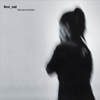
After a few well received discs, the latest work of Greek composer Thanasis Kaproulias comes courtesy of Sub Rosa’s New Series Framework project, expanding on the careful (and not so careful) use of raw noise in composition. Kaproulias is definitely on the careful end of that spectrum, restraining layers of harsh noise at times to allow calmer, more ambient moments to shine through, all the while exploring the concept of inhumanity from multiple perspectives.
"Srebrenica" initially uses the theme to showcase sounds without human interference.Opening with quiet field recordings from the ruins of Olympia in Greece, there are only the sounds of crickets, cicadas, and rivers to be heard.Then, detached and fragmented Morse code can be heard, bringing with them a dense, fuzzy drone that almost sounds like a guitar.A sinister, ominous feeling slowly develops, exacerbated by sharp, abrupt sounds of barn doors creaking and slamming, as the wind would do in a world without people.
The piece reaches a peak when harsh digital noise starts to creep in, at first slowly but eventually dominates the mix.As it is going on, recorded conversations of a woman discussing her experiences being raped during the Bosnian civil war are heard, putting forth a decidedly different, more disturbing example of inhumanity that is punctuated with the dissonant roar.Eventually the noise pulls away, revealing only the pastoral recordings from before.
"Aircraft Noises" is a literal title for the second piece, a mixed-down version of a multichannel installation performance.There’s no subtlety to be heard in the opening moments:a sprawling field of high end digitally compressed noise is heard, though propelled by some semblance of a rhythmic structure that could purely be a figment of my imagination.The sound frequency is expanded, bringing in lower, less compressed sounds that are more identifiable as a jet engine.
This is eventually pushed into the world of pure harsh noise walls, layer upon layer of distorted engine noise that drowns out all around it, until samples of flight safety recordings in various languages occur, pre-recorded and disembodied voices telling passengers what to do during a crash in a juxtaposition of human and synthetic.All the while, beeps from in-flight intercoms are miraculously shaped into a bizarre melodic accompaniment, and the piece ends with shrill buzzes and fighter jets passing over a military airport.
Again, Kaproulias expertly balances the use of noise and ambience with a flair for drama and tension.I'm personally impressed with the way the disc utilizes raw, wall noise approaches without succumbing to the temptation to simply shred speakers, but instead convey beauty as well as aggression.It also bounces dynamically between quiet and loud moments, and not simply focusing on jarring transitions.While the two pieces on here are thematically linked, they do feel somewhat disparate in their approach and the result is what feels like two separate works rather than one unified one.Not that it’s a problem, as both stand strongly on their own, but it's a caveat that should be acknowledged.
samples:
 
Read More
- Administrator
- Albums and Singles
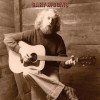 Six years ago, Drag City tracked down outsider folk artist Gary Higgins and reissued his solitary lost album, 1973's Red Hash, a slow-burning work of art that was difficult to find on vinyl 30 years after its release. After that album and a new release by Higgins, 2009's overlooked Seconds, Drag City is now presenting Higgins' recordings made prior to Red Hash, a previously unreleased collection of six hushed, lovely songs that Higgins wrote and recorded in a Connecticut log cabin (eat your heart out, Bon Iver...) in 1970-71.
Six years ago, Drag City tracked down outsider folk artist Gary Higgins and reissued his solitary lost album, 1973's Red Hash, a slow-burning work of art that was difficult to find on vinyl 30 years after its release. After that album and a new release by Higgins, 2009's overlooked Seconds, Drag City is now presenting Higgins' recordings made prior to Red Hash, a previously unreleased collection of six hushed, lovely songs that Higgins wrote and recorded in a Connecticut log cabin (eat your heart out, Bon Iver...) in 1970-71.
A Dream a While Back is a collection of Higgins' psych-folk music in its purest form. The expanded instrumental palette that fleshed out his songs on Red Hash—electric guitar, percussion, cello, flute, piano, organ, bass and mandolin—is nowhere to be heard; this is Higgins, a guitar, a room and a microphone, for better or for worse. Luckily, these are revelatory songs—in case there was any doubt, the curtain being pulled back reveals that Higgins is a master of his craft, carefully arranging his songs and maximizing their impact even at a rudimentary level. While he chose to color between the lines with new instrumentation on Red Hash, his songs are compelling without any extra flourishes.
Higgins' songwriting on A Dream a While Back remains recognizably his own. If anything, the stripped-back, solo recordings on this EP effectively draw attention to the haunting undercurrent that runs through his music. Higgins' influence on modern folk artists like David Tibet and Ben Chasny (both avowed fans; the latter covered Higgins' on 2005's School of the Flower) is indisputable, the through lines apparent: introspective, often bittersweet vocals; plaintive, melancholic guitar playing that conjures up a lonely atmosphere like clouds drifting across a barren countryside; an eerie air hovering over the recordings like the tape hiss coating several of these songs.
This may sound cheesy, but I find these basic, effective recordings to be a marvel—that one man is able to conjure up such poignant, atmospheric beauty with guitar and voice, and nothing more, is incredible. The sparse, simplistic nature of Higgins' songs make wonder whether folks leaning on extra instrumentation in the modern age are, in a sense, using their 'Get Out of Jail Free' pass. Higgins achieves an intimacy that many songwriters can only dream of: this is gorgeous folk music with no frills—Gary and a guitar—and it is perfect.
Music aside, I find it refreshing that Drag City (and perhaps Higgins himself) thought it best to release A Dream a While Back as an EP—six songs, 24 lean minutes. Far too many record labels assume that "more is better" when it comes to reissues, stuffing them with undercooked bonus tracks, alternate versions of previously released songs, pointless remixes and so on. A Dream a While Back points to the truth: more is not always better. Whether Higgins recorded more material than is included here is irrelevant. This is an archival release presented exactly as it should be—lean and potent without a bad song in the bunch.
Samples:
Read More
- Administrator
- Albums and Singles
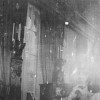 Belong's second album (and first for Kranky) arrives half a decade after their debut full-length on Carpark and a couple of abbreviated, vinyl-only releases. Luckily, Common Era is worth the wait. This is my favorite recording that Belong have made—a collection of nine ambient, washed-out pop songs folded into a labyrinth of hazy, disorienting production, like a beautiful snapshot purposely taken out of focus, its colors smeared and bleeding into one another, blurry and dreamlike.
Belong's second album (and first for Kranky) arrives half a decade after their debut full-length on Carpark and a couple of abbreviated, vinyl-only releases. Luckily, Common Era is worth the wait. This is my favorite recording that Belong have made—a collection of nine ambient, washed-out pop songs folded into a labyrinth of hazy, disorienting production, like a beautiful snapshot purposely taken out of focus, its colors smeared and bleeding into one another, blurry and dreamlike.
As on many Kranky records, there is a thick, hazy ambience at play on Common Era—equal parts guitar feedback, reverb, echo, static and noise—that wraps snugly around each of its songs and unifies the album. The production is, perhaps, a double-edged sword: on a poor stereo, I suspect the album may sound muddy; however, on great headphones (which I humbly suggest every serious music listener invest in), the details and nuances come to life. Instruments, vocals and ambient sounds bleed into one another seamlessly, but sound slightly askew and off-balance, like a fractured, distant radio transmission. The overall effect is a surreal, enveloping warmth in the production that ties the songs together.
The songs on Common Era lean toward a pop music blueprint underneath the hypnotic production: thoughtfully composed and sequenced, each with memorable structures and hooks. The brooding, patient songs (and foggy, grayscale cover artwork) recall the dark grandeur of the Cure's Faith and subsequent single "Charlotte Sometimes," yet are altogether much more complex, drawing from dream pop, ambient and drone music in pursuit of something new. There are vocals scattered throughout; individual words and phrases are discernible from time to time, but they are buried deeply in the mix and written vaguely, open to interpretation, so as not to become a focal point. The hazy, static-soaked production ensures continuity, allowing the songs to contribute to the album's effectiveness without obscuring their individual charms.
At its heart, Common Era is a modern pop album buried within gorgeous, overwhelming washes of sound. It can be difficult to draw from dream pop and shoegaze without sounding like a tribute or cover band, but Belong have done it—I haven't heard a better album this year that kindly tips its hat to those sounds, then says, "No, thank you," and moves well beyond them.
Samples:
Read More
- Administrator
- Albums and Singles
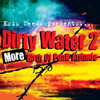 This second mix of eclectic roots underpinning the late-'70s musical revolution may irk the purists who feel Blue Cheer, Edgar Broughton, Faust, Parliament, Suicide, The Misunderstood, The Godz, Woody Guthrie and others weren't "punk." Actually, many of Kris Needs' choices make sense, although the lack of Dada tone-poetry is baffling.
This second mix of eclectic roots underpinning the late-'70s musical revolution may irk the purists who feel Blue Cheer, Edgar Broughton, Faust, Parliament, Suicide, The Misunderstood, The Godz, Woody Guthrie and others weren't "punk." Actually, many of Kris Needs' choices make sense, although the lack of Dada tone-poetry is baffling.
In his excellent book, Lipstick Traces: A Secret History of The Twentieth Century, Greil Marcus makes a convincing case for an ongoing distillation of a societal critique that he maps from the Dada movement to the Situationist International to Johnny Rotten. It's a critique based upon the standpoint of the absurdity in failing to challenge conformistconstructs such as advertising, popular culture, suburbs, organized religion and war. In a similar vein, Kris Needs identifies a slew of artists which he feels are imbued with aspirit akin to that which erupted in 1976 to register disgust and boredom at the economic and musical stagnation which held sway.
The cover art is awful and some of Dirty Water 2 features major label artists of early rock n roll, glam rock and reggae that we can skip over here. However, having made the necessary link with NYC punk with Patti Smith's "Piss Factory" (sounding better than ever) and Jayne County's "Man Enough To Be A Woman" (sounding worse than ever) Needs casts the net much wider. Firstly, he grabs some obscure US garage rock tracks by Human Expression, Zachary Thaks, Unrelated Segments, Tidal Waves and The Misunderstood (doing "Children of The Sun" which is the song I like best on this double CD set).
A bit of research on The Misunderstood reveals John Peel (in a 2003 interview) picking a gig of theirs at Pandora's Box, Hollywood, in 1966, as the best he'd ever attended; certainly in his top ten. We live and learn. It turns out that Peel first saw the group perform in a San Bernadino shopping mall and coaxed them to London to record. Unfortunately, a combination of the US draft and UK immigration seems to have caused swift and severe problems from which they never recovered. The story is detailed in Like, Misunderstood , the autobiography of lead singer Rick Brown, which looks to have some fascinating details of his subsequent escape from boot camp and fugitive life hiding in jungles and an Indian ruby mine guarded by a 115 year old guru. I'll definitely be seeking that and more of their music.
Apparently, among the most appreciated artists from the first Dirty Water compilation were (doo wop group) The Silhouettes and (black pre-punks from Detroit) Death. Both bands are featured again. Death sound like they were ahead of the punk curve but a refusal to change their name at the behest of a record company meant they ended up self-releasing 500 copies of their 1975 recordings. Their "Freakin' Out" starts with a short comical falsetto screeching of their name, but what follows is a thrashing punk rock blueprint. The Silhouettes' inclusion may be explained in the 76 page booklet accompanying this set (which I didn't receive). Presumably Needs feels their tales of economic woe, released in the late 1950s, had a echo in the doom-laden, scapegoating, dole queue backdrop to late-1970s England. Lipstick Traces also focuses on the effects of mass unemployment with a quote from Hannah Arendt:
"Each time society, through unemployment, frustrates the small man in his normal functioning and normal self respect, it trains him for that last stage in which he will willingly undertake any function, even that of hangman."
Fair enough, although as a young carefree man, I found being on the dole quite liberating in a dreamy rambling fashion which Arendt might label "bourgeois" although it felt more like "peasant with an attitude to the passage of time similar to that sometimes suggested by The Idler magazine."
Anyway, the same people who frothed at the mouth at Needs' first collection (while muttering "The Last Poets have nothing to do with punk") will froth at the mouth over 2 (while muttering "Parliament have nothing to do with punk"). And if "punk" is seen as merely a narrow musical genre, rather than creativity borne out of a "punk attitude" then the criticism is justified. However, life's too short not to accept musical variety and the more inclusive angle. Such a viewpoint also tries to avoid depicting "punk" as another art or social movement which reduces most people to spectators and deteriorates into a less than amusing exercise in exclusion. Certainly, the DIY aspect is the most alluring part of the late 1970s wave of musical creativity in the UK. Not everyone joined in, of course, but artists seemed to be coming out of nowhere to make a cassette or flexi-single, borne along on a wave of "attitude."In Lipstick Traces, that "attitude" (be it labeled Dada, Situationist, or punk) comes across as almost a biological, noble, social imperative: to smash the old and make something which you claim is new and unique. Revolt into style, refuse to be logical, reject any labels and deny all influences. Let the critics who come along later sort it into neat piles of genre and location, if they must.
In terms of the musical variety which Needs showcases, I was pleased to listen again to some forgotten UK groups such as Kilburn & The High Roads (Ian Dury's group before The Blockheads) and Doctors of Madness. Up-close in the confines of Burton-on Trent's 76 Club, I recall Dury's stage presence as genuinely unnerving. Of course, back then it was not unknown to sup pints of "hosepipe" (mixing brown ale, barley wine and brandy) after which many things had a tendency to become "genuinely unnerving" not least oneself. In the same venue the Doctors of Madness were less memorable with their slightly silly outfits and stage presence. The Edgar Broughton Band were more interesting and it's good to hear "Out Demons Out" again. Maybe it was the smattering of Clockwork Orange-esque trousers but the group had a pleasing yet defiant, quasi-thuggish demeanor and a clunky sound which was a million miles from the pomposity, increasingly un-affecting technical skill, and celebrity aura that was the stale musical norm in the UK; after years of diminishing returns from progressive rock and West-Coast influenced balladry.
Kris Needs has a sense of how to get people to pay attention to the things he loves. He took over the fanzine Zig Zag and probably sold more copies in a single issue with (the then uber-hot and relevant) Debbie Harry on the cover than all the previous ones combined. The range of 39 tracks on Dirty Water 2 hold my interest very well. There is a sense of rebellion conveyed by speed, aggressive playing, strident lyrics and a defiant pose. I enjoy the tangents into the realm of dub toasting, the leaps into wild instrumental catharsis or (in the case of The Holy Modal Rounders resembling a whole group of Legendary Stardust Cowboys on "Indian War Whoop") the rabid yelping. Suicide also whisper and growl over what sounds like battling malfunctioning vacuum cleaner and didgeridoo for "Creature Feature." Certainly it's a fine mix when Faust, John Otway & Wild Willy Barrett and The United States of America can rest easily together. My only gripes are the cover, a couple too many major label artists, the absence of any Dada gibberish, and something from Captain Lockheed and The Starfighters.
samples:
- Death - Freakin Out
- Suicide - Creature Feature
- Parliament - O Lord Why Lord
- Holy Modal Rounders - Indian War Whoop
- Edgar Broughton - Out Demons Out
- The Misunderstood - Children of the Sun
Read More
- Administrator
- Albums and Singles
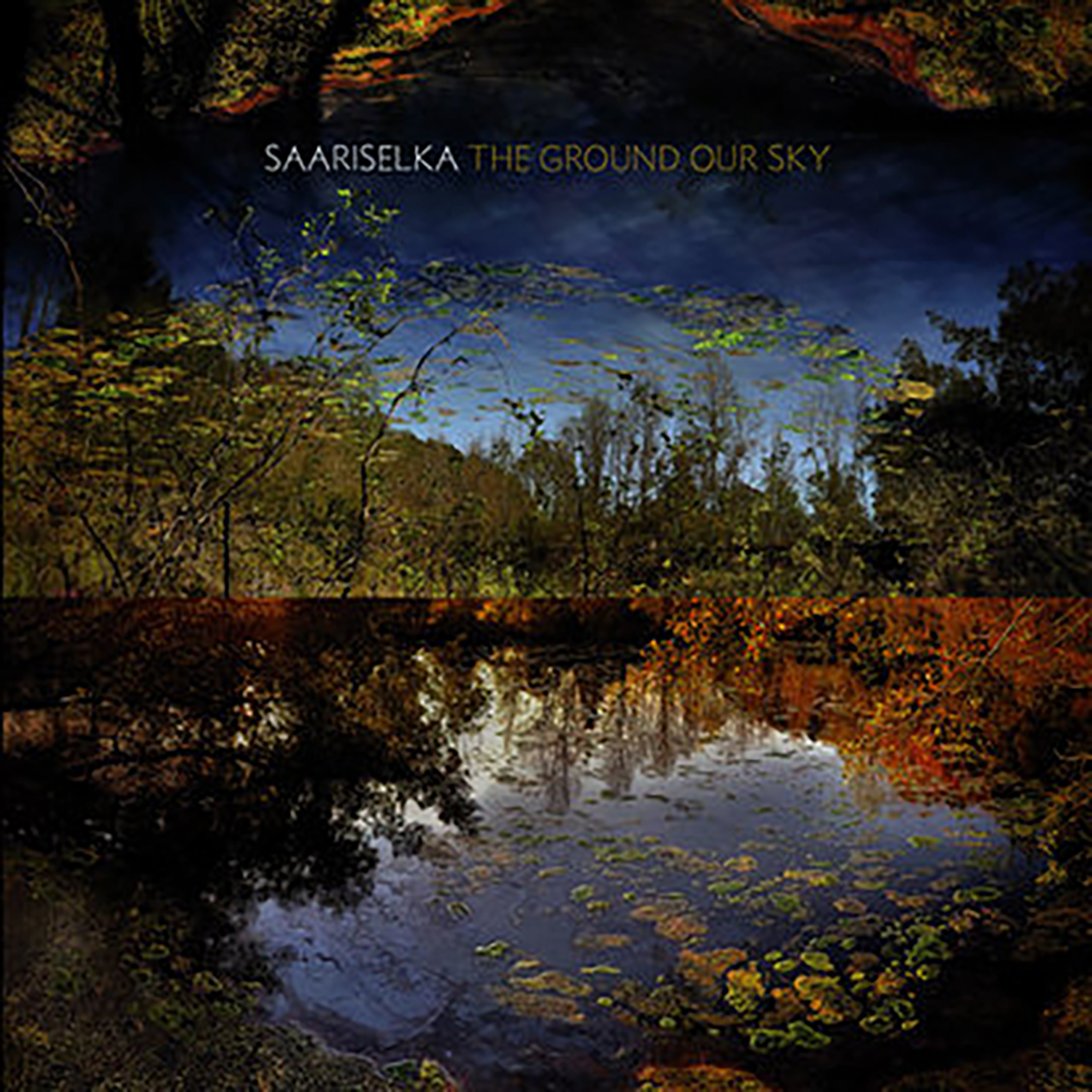 It is quite rare for two artists with successful solo careers to team up for a genuinely strong collaborative project that offers a fresh vision, but this debut full-length from Marielle V. Jakobsons and Chuck Johnson is the elusive exception that is arguably better than the sum of its parts. I say "arguably" only because each artist is already responsible (or at least partly responsible) for some albums that I have absolutely loved in the past. Notably, however, both artists have undergone significant stylistic evolutions in their careers, which may very well be the secret to a truly egoless and organic confluence of visions: neither was rigidly tied to a signature style, so finding a fertile common ground was probably just a natural outcome after playing together for a while. That said, the clear antecedent to this project is Johnson's gorgeous Balsams album (his first on pedal steel). As someone who was thoroughly beguiled by that album, it never would have occurred to me that Johnson might have been able to reach even greater heights with the help of a sympathetic foil on Fender Rhodes, but I am delighted that it occurred to Jakobsons (and that she was completely right).
It is quite rare for two artists with successful solo careers to team up for a genuinely strong collaborative project that offers a fresh vision, but this debut full-length from Marielle V. Jakobsons and Chuck Johnson is the elusive exception that is arguably better than the sum of its parts. I say "arguably" only because each artist is already responsible (or at least partly responsible) for some albums that I have absolutely loved in the past. Notably, however, both artists have undergone significant stylistic evolutions in their careers, which may very well be the secret to a truly egoless and organic confluence of visions: neither was rigidly tied to a signature style, so finding a fertile common ground was probably just a natural outcome after playing together for a while. That said, the clear antecedent to this project is Johnson's gorgeous Balsams album (his first on pedal steel). As someone who was thoroughly beguiled by that album, it never would have occurred to me that Johnson might have been able to reach even greater heights with the help of a sympathetic foil on Fender Rhodes, but I am delighted that it occurred to Jakobsons (and that she was completely right).
As someone who is quite fond of both Marielle Jakobsons' early work as Darwinsbitch and her collaborations with Agnes Szelag (Myrmyr, EJS), I still occasionally have a hard time wrapping my mind around the fact that the same artist is also behind Date Palms and Saariselka.Every great artist changes over the course of their career, but the aesthetic gulf between Jakobsons' days as a formidable violinist and her recent sun-dappled, meditative reveries is quite a substantial one.While her newer albums are too varied and distinctive to quite bleed into the New Age vogue, she has definitely become synonymous with a style of earthy, laid-back psychedelia that feels very "California" to me.
In that regard, Jakobsons and pedal steel-era Johnson are very much kindred spirits and The Ground Our Sky is an archetypal example of that evocative stylistic niche.In fact, that terrain proves to be surprisingly fertile and shifting creative ground for the pair, as these six songs take a number of different and intriguing directions.To some degree, it feels like Jakobsons and Johnson alternated taking the lead on songwriting, as some pieces feel more driven by organ and some by guitar.On the strongest pieces, however, the instruments merge together so organically and beautifully that they seem to have sprang into the world fully formed."Void" is the most sublime success story in that vein, as Jakobsons' twinkling organ arpeggios leave lovely vapor trails while Johnson's swooning and chiming pedal steel weaves a shimmering haze of its own.It is a strikingly beautiful and lush piece of music, as well as one of the few songs in which Jakobsons sings, resulting in quite a woozily wonderful swirl of dreampop heaven.
Elsewhere, the opening "Horizons" is yet another gem, as a lazily winding and chiming organ motif blossoms into a vivid new vista once Johnson's ringing arpeggios, sliding chords, and shivering sustained notes start to elegantly intertwine with the original theme."Into The Wind" is a highlight as well, as a gently swaying and languorous web of arpeggios slowly coheres into a hushed vocal piece embellished by lazily glimmering organ melodies and bleary pedal steel glissando.I am also quite fond of the more diffuse and ambient-minded "Neochrome," in which a gently rippling, slow-motion succession of organ chords provides a loose backdrop for pedal steel that feels like a soft-focus ghost ballet.The closing "Afterlight" is another piece that approximates ambient drone territory, but it is a far more radiant variation, as Johnson's guitars lazily smear together over a warm bed of drones like the final streaks of a gorgeous pink and violet sunset.Only the sleepily burbling "Subsurface" feels like a misstep: it is all sunny psych shimmer without any added depth or shadow to give it some necessary gravitas.That said, there are plenty of artists who have made careers mining similar territory, so perhaps it is just more of a direction that is subjectively (if emphatically) not for me.Saariselka are far too good to be delving into Kosmische pastiche or homage.
For the most part, however, every direction that Jakobsons and Johnson explore tends to be quite an appealing and absorbing one: The Ground Our Sky simultaneously delivers on the promise of 2018's Ceres and expands that earlier vision in some very inspired ways.I was especially struck by "Void," as I had not anticipated this project ever creeping into Julee Cruise-esque "pop" territory (or doing it quite so beautifully if they did).The real magic of this union transcends the success of any individual song though, as Jakobsons and Johnson seem very much attuned to the same cosmic vibrations and their twin visions complement each other perfectly.Also, I was surprised anew by how much emotion and heavenly beauty Johnson is able to conjure from a pedal steel, as I have never viewed it as a particularly promising lead instrument (and tend to prefer my guitars inventively misused rather than played properly).Between this album, Balsams, and Ayami, however, Johnson has decisively won me over to both the instrument and his artistic vision for it–the man is on quite an impressive run of releases these days and this album only continues that trend.It is damn hard to make radiant, gentle, and quietly lovely music that has real depth and soul: when they are at their best, Saariselka manage to do it better than just about anybody.
Samples can be found here.
Read More


